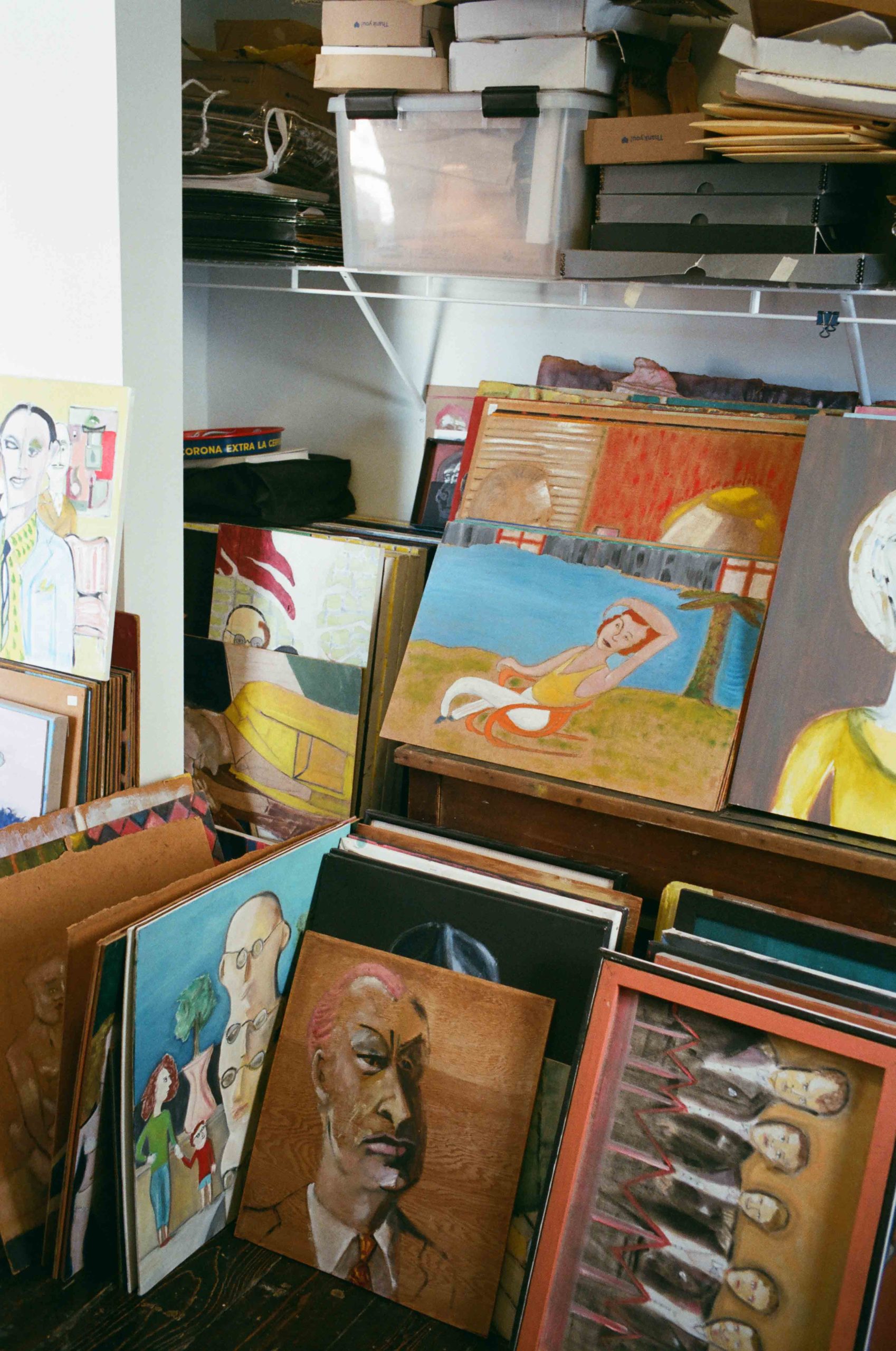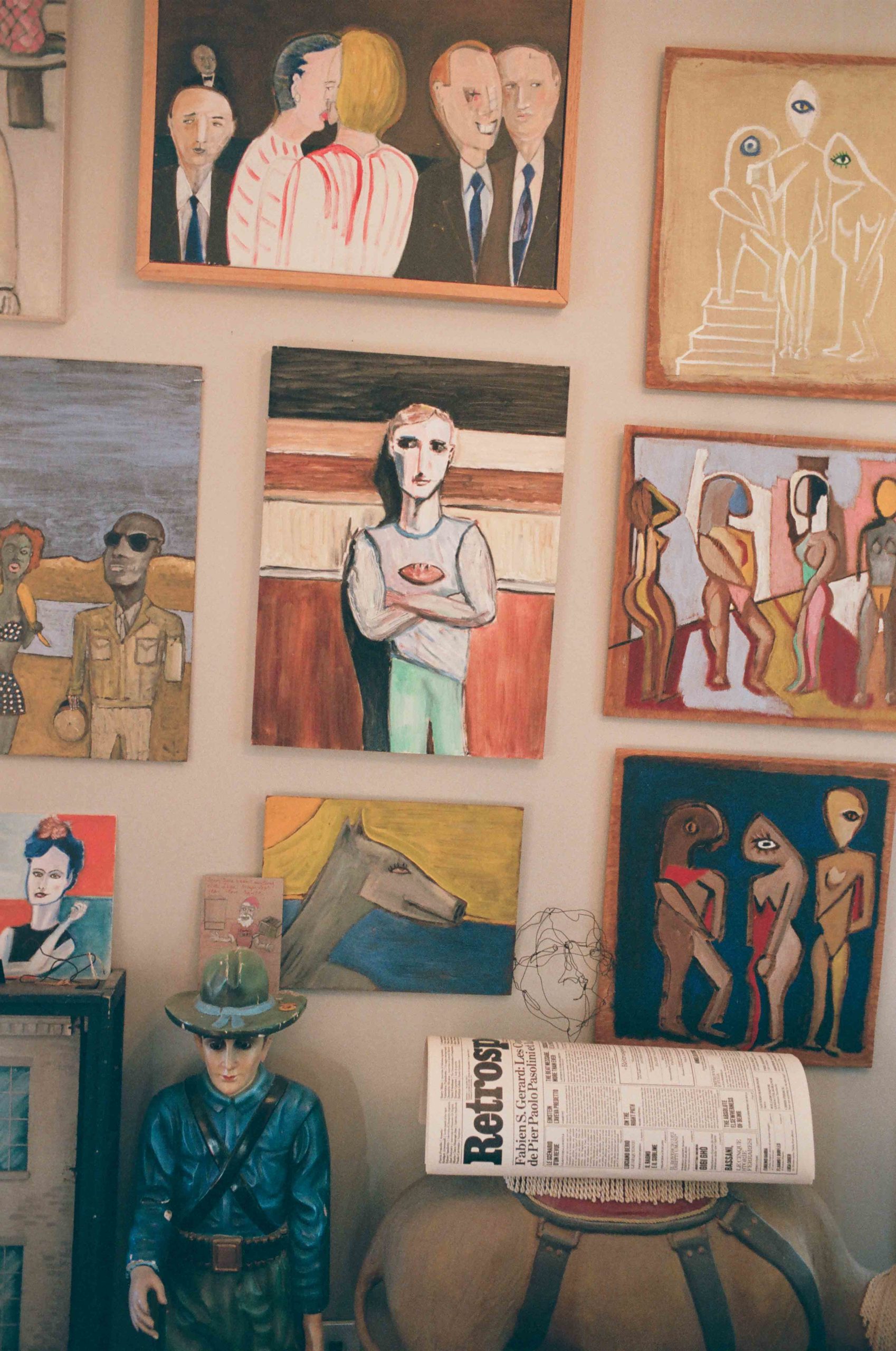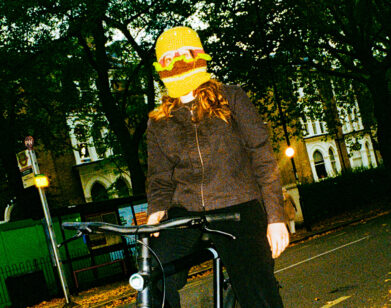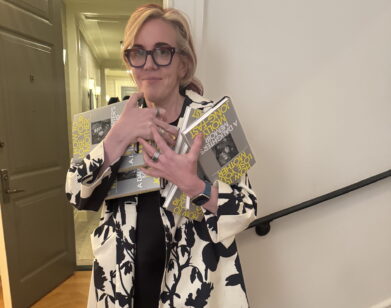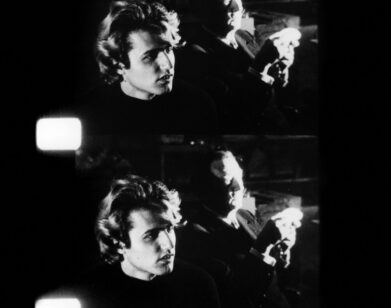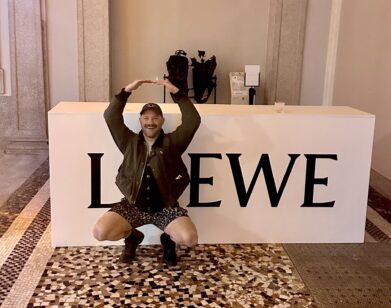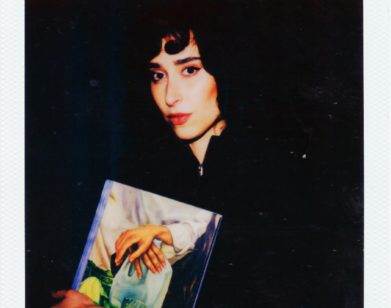art!
FARAGO and TIWA Select Spotlight Unsung Artists with “Everyday Rituals”
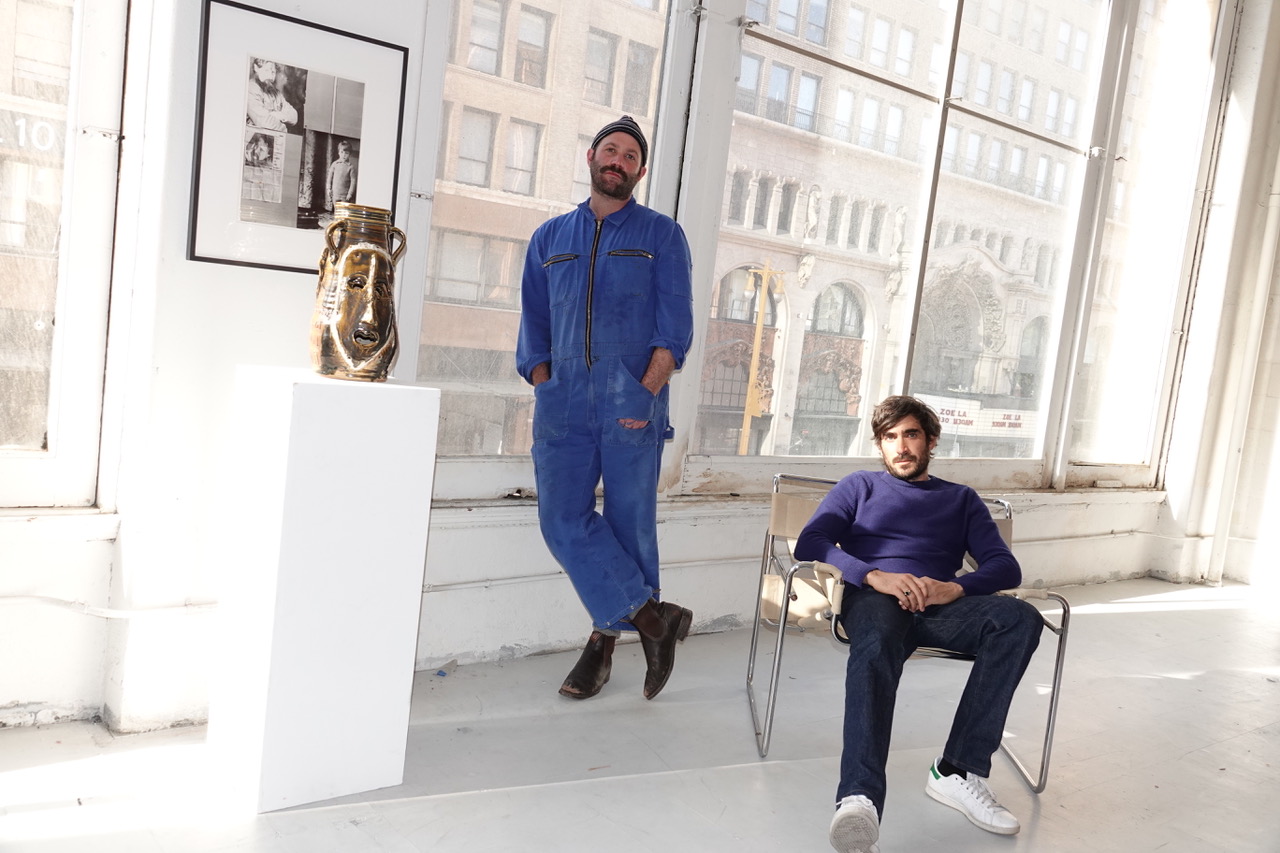
Alex Tieghi-Walker and Max Farago. Photo by Leigh Johnson, 2022.
This week, FARAGO and Tiwa Select—two of Los Angeles’ preeminent advocates for the showcasing of anonymous, under-exhibited, and craft works—open “Everyday Rituals,” an exhibition of sculptures, paintings, and utilitarian objects in tandem with Frieze Los Angeles. The show, co-curated by Max Farago and Alex Tieghi-Walker, celebrates talents from the art world’s margins who might never have expected to display their work in a formal gallery setting. One such artist is Michael Lindsay-Hogg, a filmmaker best known for directing the earliest Beatles and Rolling Stones music videos, whose large-scale paintings attempt to make sense a childhood spent at the feet of icons of the 20th century like Orson Welles and Henry Miller, and decades working in the eye of the rock and roll storm. To mark the opening of “Everyday Rituals,” Farago and Lindsay-Hogg, who first met through the artist’s fleet of step-daughters, spoke over Zoom about the exhibition, making art without an audience, and the importance of staying “svelte.”
———
MICHAEL LINDSAY-HOGG: Hi, Max.
MAX FARAGO: Hey Michael, how are you?
LINDSAY-HOGG: Fine, so this is only audio, right?
FARGO: Should we up the ante and turn on our cameras?
LINDSAY-HOGG: I don’t know how to do that. Oh, there it is. I can see you now, which is always nice. How are things going?
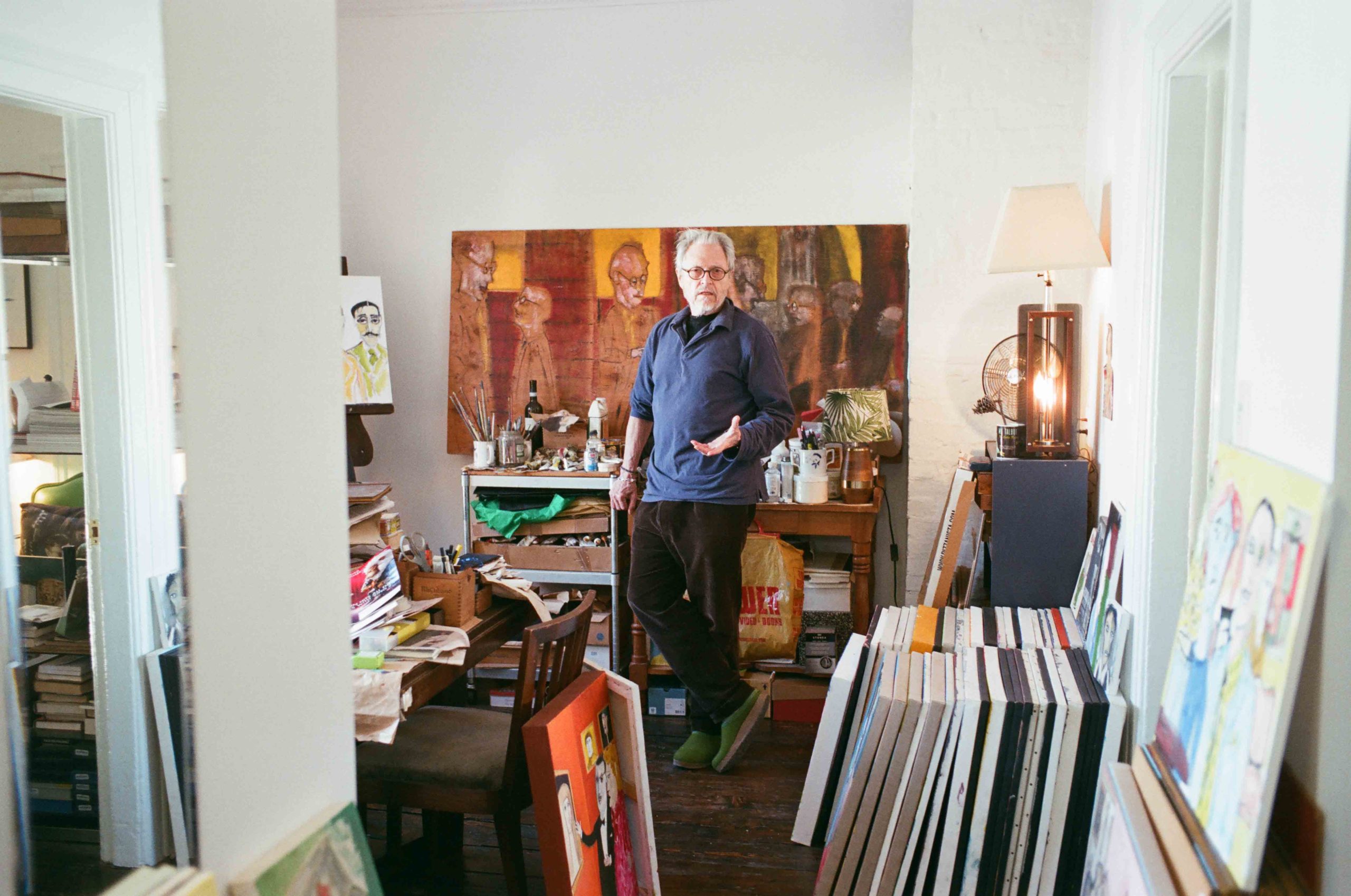
Photo courtesy of Michael Lindsay-Hogg.
FARAGO: Good! Michael, we met because I’m friends with three of your stepdaughters, all independently of one another. One of them—a dear friend named Frances—always speaks very highly of you and your paintings. When I reopened my gallery this year, she said, “You should do a show with Michael. You would love one another.”
LINDSAY-HOGG: Well, two of them are honorary stepdaughters, but I’ve known them longer than I’ve known my real stepdaughter. Francis is the daughter of my first wife, Lucy, and Tara Summers is the daughter of my very long time girlfriend, Nona. The real one is Jane Mosley in Los Angeles, who’s a model and an artist herself, and who is the daughter of my wife, Lisa. Okay, so we’re totally up to date now.
FARAGO: That could’ve gone on for another 30 minutes I bet. [Laughs] We’ll move on.
LINDSAY-HOGG: What’s that on the wall behind you? Are those paintings?
FARAGO: Yeah, those are your paintings. I painted the wall pink back there. I thought your work would look nice on it.
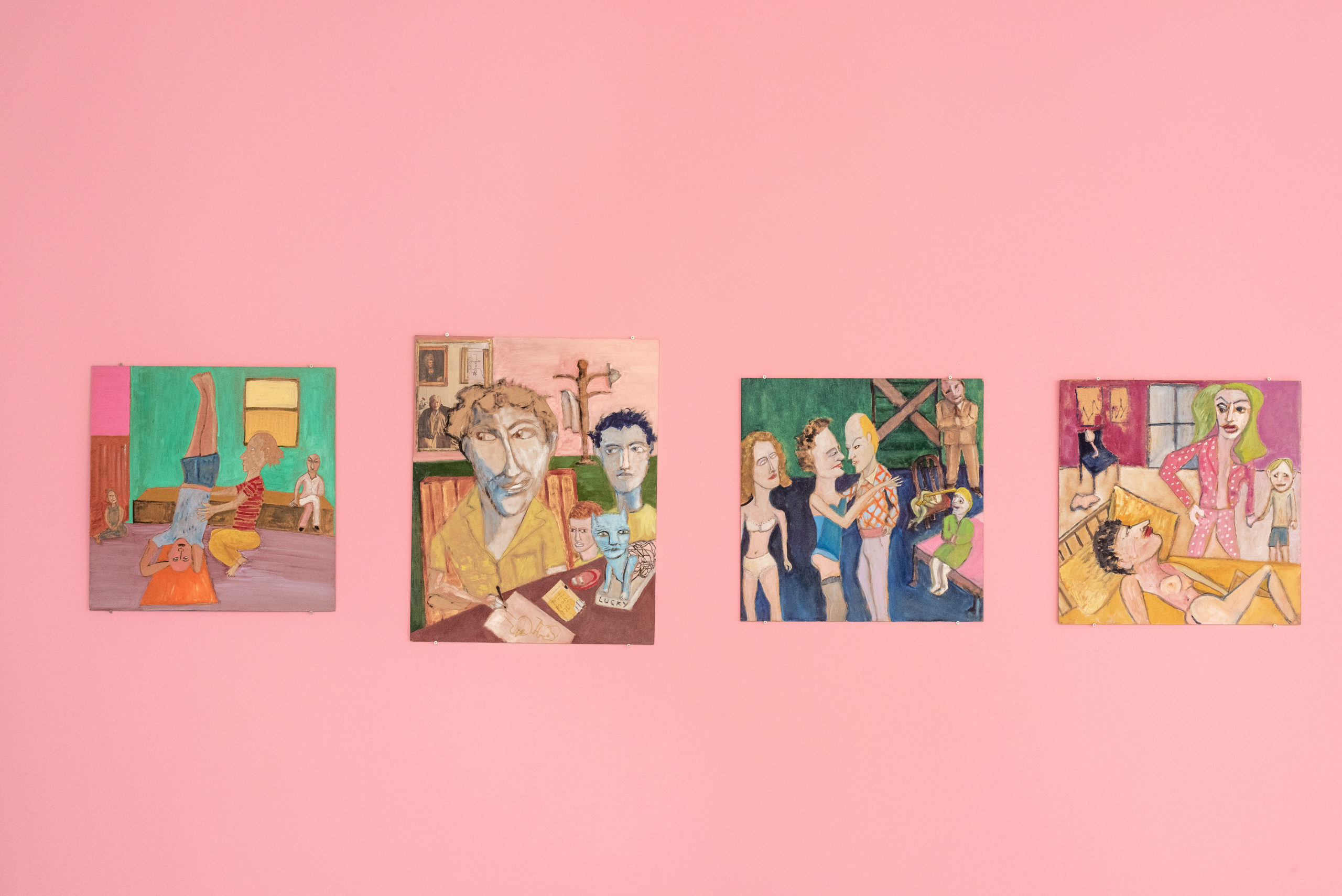
Paintings by Michael Lindsay-Hogg. Photo courtesy Farago Gallery and Tiwa Select.
LINDSAY-HOGG: Pink is one of my favorite colors. When I was a kid, the one thing I wanted was a pink Brooks Brothers button-down shirt. So, I couldn’t be happier with your choice.
FARAGO: Can you tell people a bit about where you come from, and how you came to painting and drawing?
LINDSAY-HOGG: My mother was an actress called Geraldine Fitzgerald. She was in Wuthering Heights, and she got her Oscar nomination for that. Somehow, through ambition and luck, I found myself directing Ready Steady Go!, which was an amazing live rock and roll TV show in London. We had the Beatles, the Rolling Stones, The Who, The Kinks, and visiting Americans like Otis Redding and Tina Turner on. I was 24, so I found myself in that world at a young age, which was fine by me. That got me started doing music videos—there were hardly any before I started doing them. I did them with The Beatles and The Rolling Stones and The Who. After that, I did a TV series called Brideshead Revisited. But all my life I’d drawn, drawn, drawn. Eventually I tried to paint, and I took to that like a goose to flight. I don’t really know what I’m doing, and that’s the exciting part. I make all kinds of mistakes—a wrong line or color here and there—but I treat it like solving a puzzle. I turn men into women, women into men, tables into lamps. I’ve been painting for the last 25 years. I’ve had shows in Paris, London, and Los Angeles, but nothing quite like your show.
- Paintings by Michael Lindsay-Hogg.
FARAGO: The paintings of yours that I like most are these situational dramas. There are always strong women dragging oblivious men along, and children who seem to be outside their own realm of understanding a little bit, you know?
LINDSAY-HOGG: I think you’re dead right. I mean, I never realized that, but now I want you to be my therapist.
FARAGO: Alex [Tieghi-Walker] and I have always been interested in shifting the focus of contemporary art towards people who’ve had interesting lives, who spent years finessing a practice that somehow has sat outside of the mainstream. This exhibition is mostly artists who are older or who left behind incredible archives that haven’t been shown extensively. Not only are your paintings incredible and strange, but they also have so much of your own history and past and trauma enveloped in them.
LINDSAY-HOGG: That’s what’s so exciting about the artists that you’ve chosen to show. Not everybody has to have the same credentials to be an artist—I mean we can think of countless outside artists whose work is very memorable. I’m a big fan of Jean Dubuffet, who stopped painting for 30 years to become a wine salesman. People often don’t want paintings which are hard to figure out, they want friends to come over to dinner and say “Oh, that’s a nice painting.” There are a lot of people who aren’t lucky enough to have an eye, and you, Max, have an eye—and you’re training that eye on overlooked artists.
FARAGO: I wanted to note, both you and I are dyslexic. As a child, my parents’ writer and artist friends were only adults who I could see myself becoming, and who didn’t make me feel stupid. Were there artists who you looked up to as a child?
LINDSAY-HOGG: Completely. I couldn’t read until I was almost nine years old. I was also fat, and the combination of being fat and not being able to read put me behind the eight ball with the other boys. My mother had many friends in the arts. One was Henry Miller, the author. He came for dinner one night when I was 14, and he told me,“Get out of school as soon as you can, and then your life will begin.” Another was Orson Welles, who said to my mother, “If Michael isn’t happy, let him come watch our rehearsals of King Lear.” I realized that, if you were odd, the theater was a good place to start your life.
FARAGO: Tell me again how Henry Miller used to start his day?
LINDSAY-HOGG: You know, he was multifaceted as an artist. He was indeed a writer, and later in life, started to paint watercolors. He told my mother that, in the morning, he’d sit his table to write, and if he felt blocked, he’d just write pornography instead. It loosened him up. Writing pornography was like hitting the bag for Henry Miller.
FARAGO: That’s inspirational.
LINDSAY—HOGG: It’s a very specific talent, like keeping bees, or something.
FARAGO: You own a drawing by [Henri] Cartier-Bresson, the great street photographer. As he aged, he transitioned from framing the world from the outside in to the inside out, emphasizing the purity of gesture and quick expression. In the evolution from directing to painting and drawing, are you trying to distill the creative process into something that feels more pure or direct?
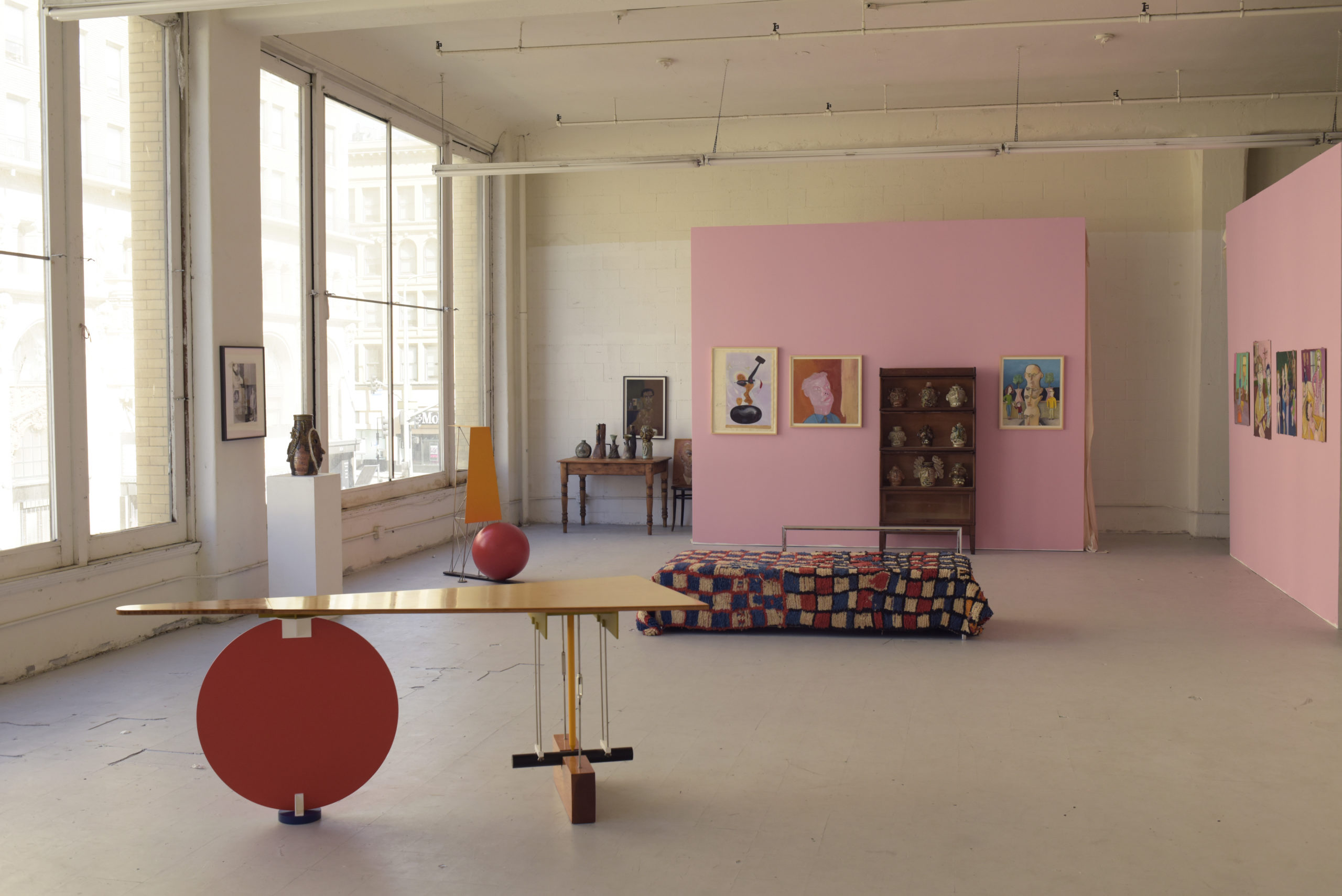
Photo courtesy Farago Gallery and Tiwa Select.
LINDSAY-HOGG: Very much so. One of the good and bad things about being a director, whether it’s movies or television or theater, is that you have a lot of collaborators. Sometimes they become your friends, but sometimes, especially if you’re in the movie business, they’re producers or executives with a different opinion than you about what’s good, how long the movie should be, whatever. The good thing about painting is that if you want a green moon, there’s no one to say to you, “The moon will do better in the box office if it’s yellow.” There’s not much interference.
FARAGO: What’s your favorite bar in the world, and what’s your order?
LINDSAY-HOGG: Anyplace that makes a really cold Martini, which is served in a big glass. There’s a very good restaurant in London called the Woolsley that’s fairly reliable. Vodka makes me a little crazy, I find gin more encouraging. Although, since I got a new heart valve—it’s made of titanium and a bit of pig—I haven’t been drinking as much, so I’m feeling quite—what’s the word?—svelte. Either they make bread with “svelte,” or “svelte” means thin.
FARAGO: You feel hot, is what you’re saying.
LINDSAY-HOGG: Yeah, I’m feeling hot and alive and svelte.

